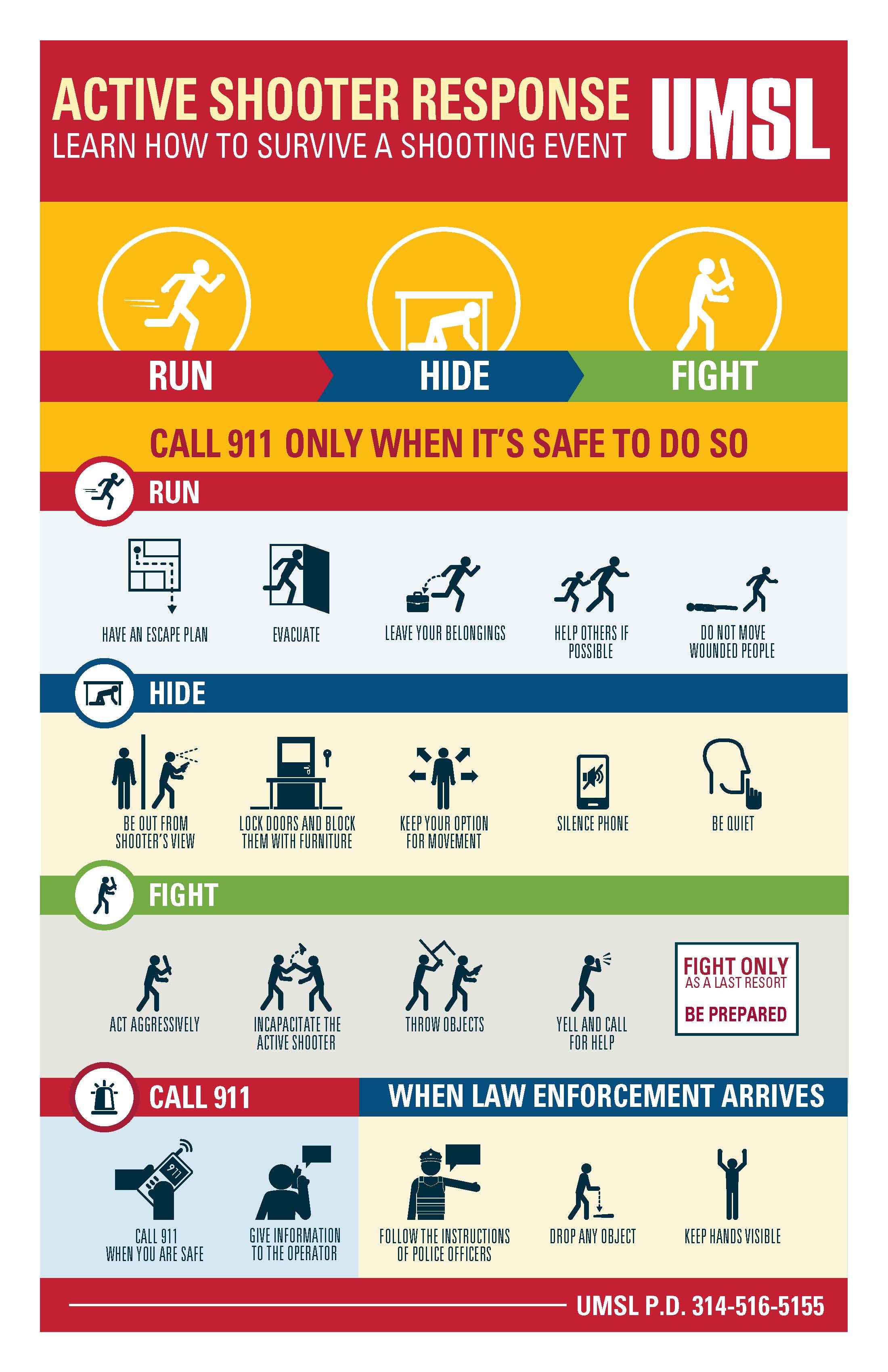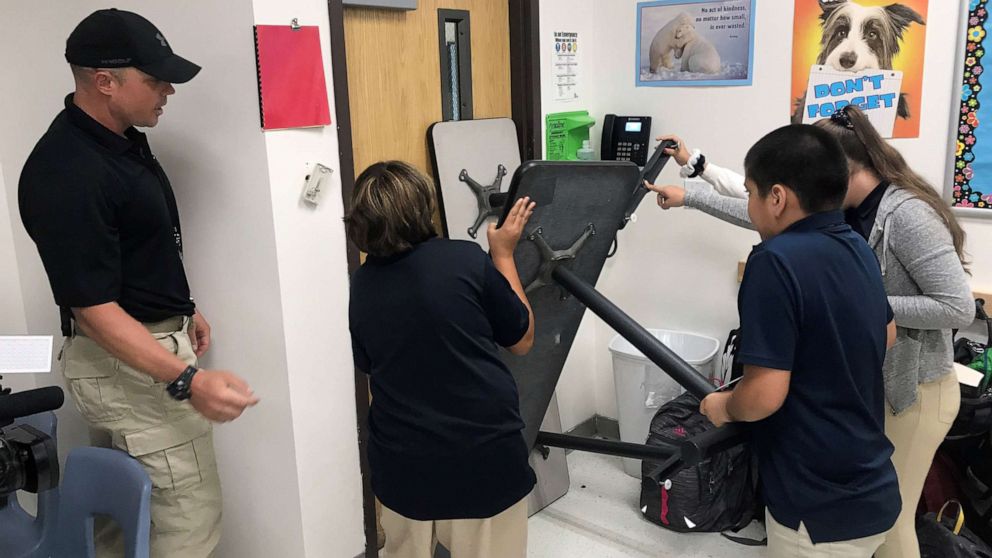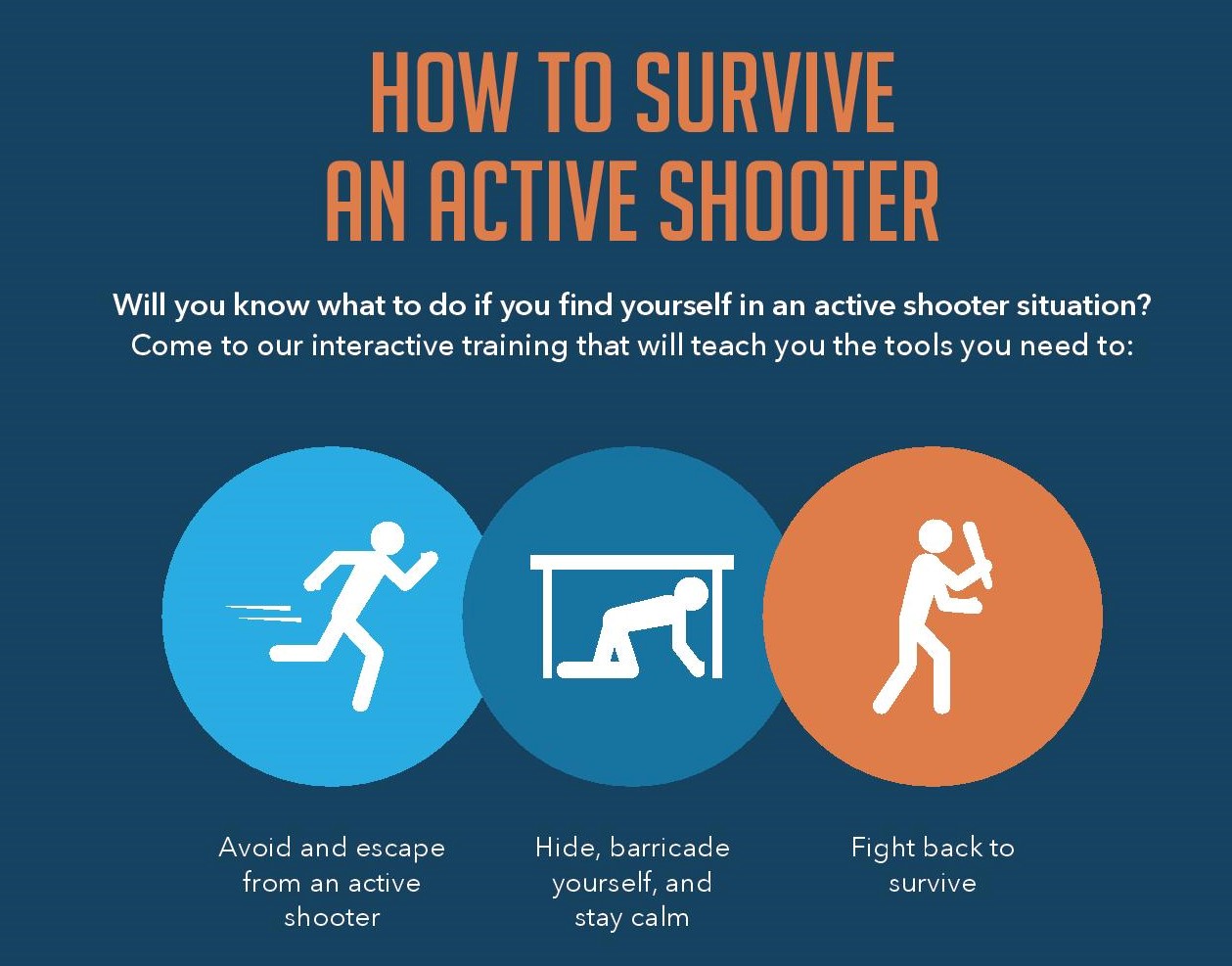Exactly how to Prepare Your Staff with Active Shooter Training for Emergency Situations
Exactly how to Prepare Your Staff with Active Shooter Training for Emergency Situations
Blog Article
Applying Active Shooter Training: Best Practices for Developing a Safe and Prepared Community Environment
As neighborhoods face the upsetting reality of energetic shooter cases, the implementation of detailed training programs comes to be necessary. A successful method pivots on not just the growth of customized curricula that address regional dangers however likewise the participation of diverse stakeholders. By utilizing a variety of training methods, communities can ensure that all participants are equipped with important skills. The challenge lies in maintaining a flexible structure that progresses with arising hazards. What are the essential components that can change a typical training program right into a durable design for neighborhood durability?

Comprehending the Need for Educating
In an age noted by boosting events of violence in public rooms, recognizing the requirement for active shooter training has never been a lot more critical. Comprehensive training campaigns can gear up individuals with the expertise and abilities to react emphatically.
Training cultivates a feeling of empowerment and readiness, allowing people to feel more secure in their environments. The advantages of active shooter training extend past prompt action; they include enhancing interaction procedures and boosting general safety steps within organizations.
Secret Elements of Effective Programs
Efficient active shooter training programs include a number of essential components that improve preparedness and reaction capacities. Extensive curriculum growth is important, guaranteeing that training content is appropriate, evidence-based, and tailored to the certain demands of the company or community. This consists of recognizing the dynamics of energetic shooter events and the emotional influence on people included.
Second, realistic training scenarios need to be employed to mimic potential circumstances, permitting participants to exercise decision-making and reaction strategies in a regulated environment. These drills promote muscle mass memory and develop confidence among individuals.
Third, a concentrate on communication protocols is essential. Developing clear lines of communication amongst legislation enforcement, emergency responders, and individuals makes sure collaborated actions during an occurrence. Normal updates and correspondence course aid keep communication pathways clear and reliable.
4th, continuous evaluation and responses devices ought to be integrated right into the training program - active shooter training. Examining the effectiveness of training via participant responses and performance metrics permits constant enhancement
Last but not least, fostering a culture of security and preparedness within the area motivates caution and aggressive actions, ensuring that people are not only skilled but also engaged in preserving a safe atmosphere.
Engaging Community Stakeholders

To efficiently engage these stakeholders, it is important to connect the objectives and benefits of the training. Hosting informational sessions can assist make clear the webpage training's function, address concerns, and detail the duties each stakeholder may play. Producing a stakeholder consultatory board can facilitate continuous dialogue, allowing for diverse perspectives and understandings to be incorporated right into the training program.
Building connections with area leaders and organizations is likewise crucial. Their support can boost outreach efforts, boost involvement, and make certain that training is tailored to the distinct requirements of the community. Additionally, stakeholders can help in sharing details and resources, enhancing the message of safety and readiness.
Ultimately, engaging area stakeholders not only strengthens the training effort yet additionally cultivates a sense of possession among residents, resulting in a much more durable and educated area with the ability of responding efficiently to prospective risks.
Training Distribution Approaches
Making use of a range of training shipment methods is vital to suit the diverse knowing styles and demands of participants in active shooter training programs (active shooter training). Reliable training can take numerous types, including talks, hands-on simulations, on the internet components, and interactive workshops. Each approach serves a distinct purpose and can boost the general discovering experience

On-line components use flexibility and accessibility, making it possible for participants to discover at their very own rate. These can include this website videos, tests, and conversations to gauge understanding. Interactive workshops motivate team conversations and problem-solving, advertising team effort and communication skills.
Incorporating a blended method that incorporates these methods not only enhances the training experience yet additionally ensures that individuals are much better prepared to react properly in case of an active shooter situation (active shooter training). By addressing different discovering choices, companies can produce a much more educated and receptive area
Continual Analysis and Renovation
Normal analysis and enhancement of active shooter training programs are important to preserving their significance and efficiency. As dangers develop, so should the techniques and approaches utilized in training. Continuous evaluation guarantees that training material shows the most up to date intelligence on active shooter cases, including lessons picked up from current events and changing for emerging patterns.
To facilitate this process, companies must establish feedback systems that include individual evaluations, specialist testimonials, and occurrence debriefs. Collecting information on participant performance throughout drills and exercises is important, as it highlights areas requiring renovation and educates future training sessions. Furthermore, engaging with regulation enforcement and emergency situation responders can give important insights right into the functionality and applicability of training protocols.
Routinely set up evaluations of training materials and techniques should be mandated, cultivating an atmosphere of innovation and versatility. Organizations needs to additionally encourage a society of ongoing understanding, where personnel participants feel empowered to recommend changes based upon their experiences. By dedicating to continual analysis and enhancement, companies not just boost the effectiveness of their energetic shooter training programs yet likewise enhance their overall commitment to safety and preparedness within the area.
Conclusion
Finally, effective application of active shooter training demands an extensive strategy that prioritizes community interaction and sensible simulations. By creating tailored educational programs, including diverse training methods, and promoting collaboration amongst stakeholders, areas can enhance preparedness. Constant examination and feedback systems are crucial for adapting programs to emerging risks, consequently enhancing general safety and security. Inevitably, a dedication to recurring training and renovation grows a society of watchfulness and readiness, making certain a more secure setting for all area participants.
Report this page